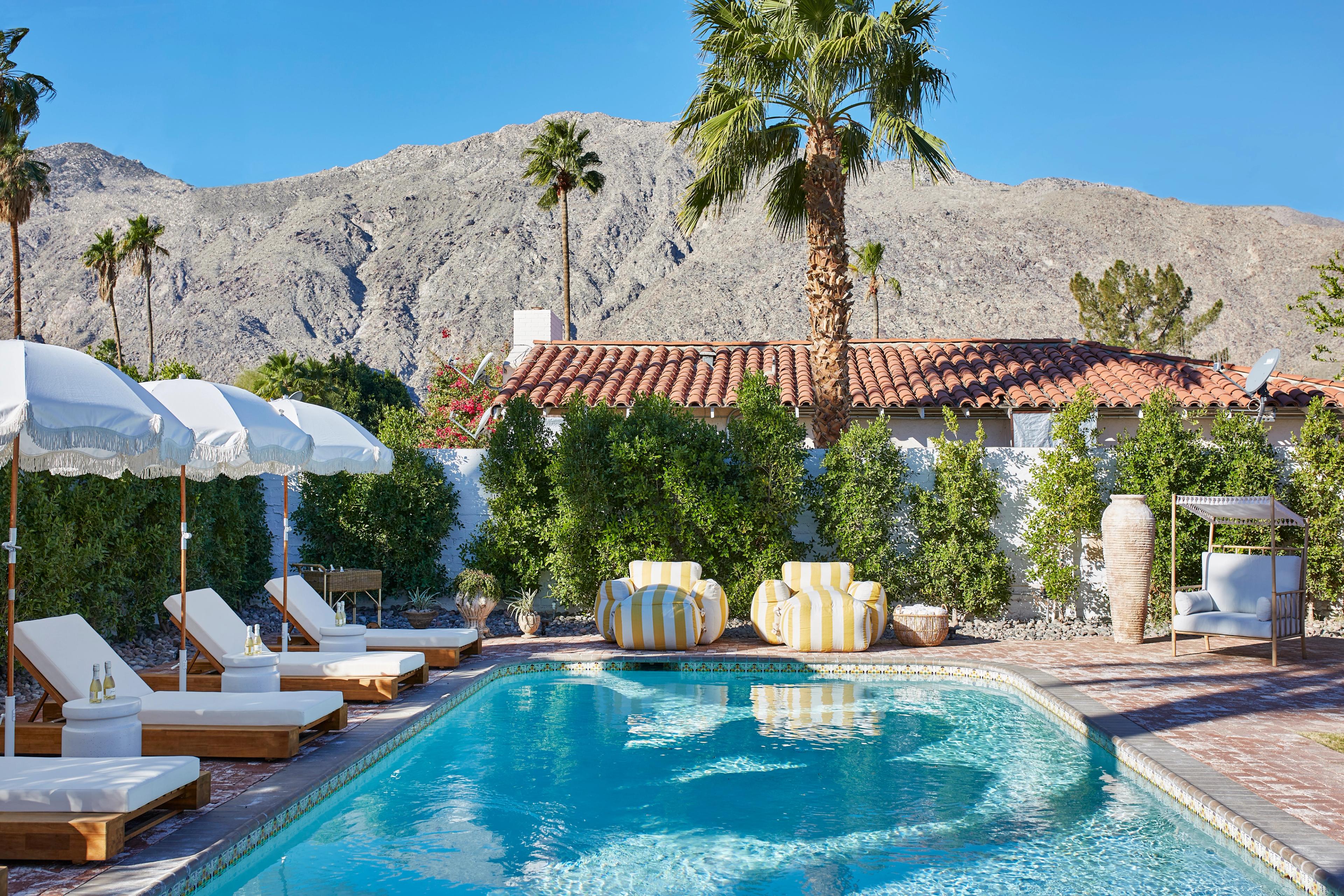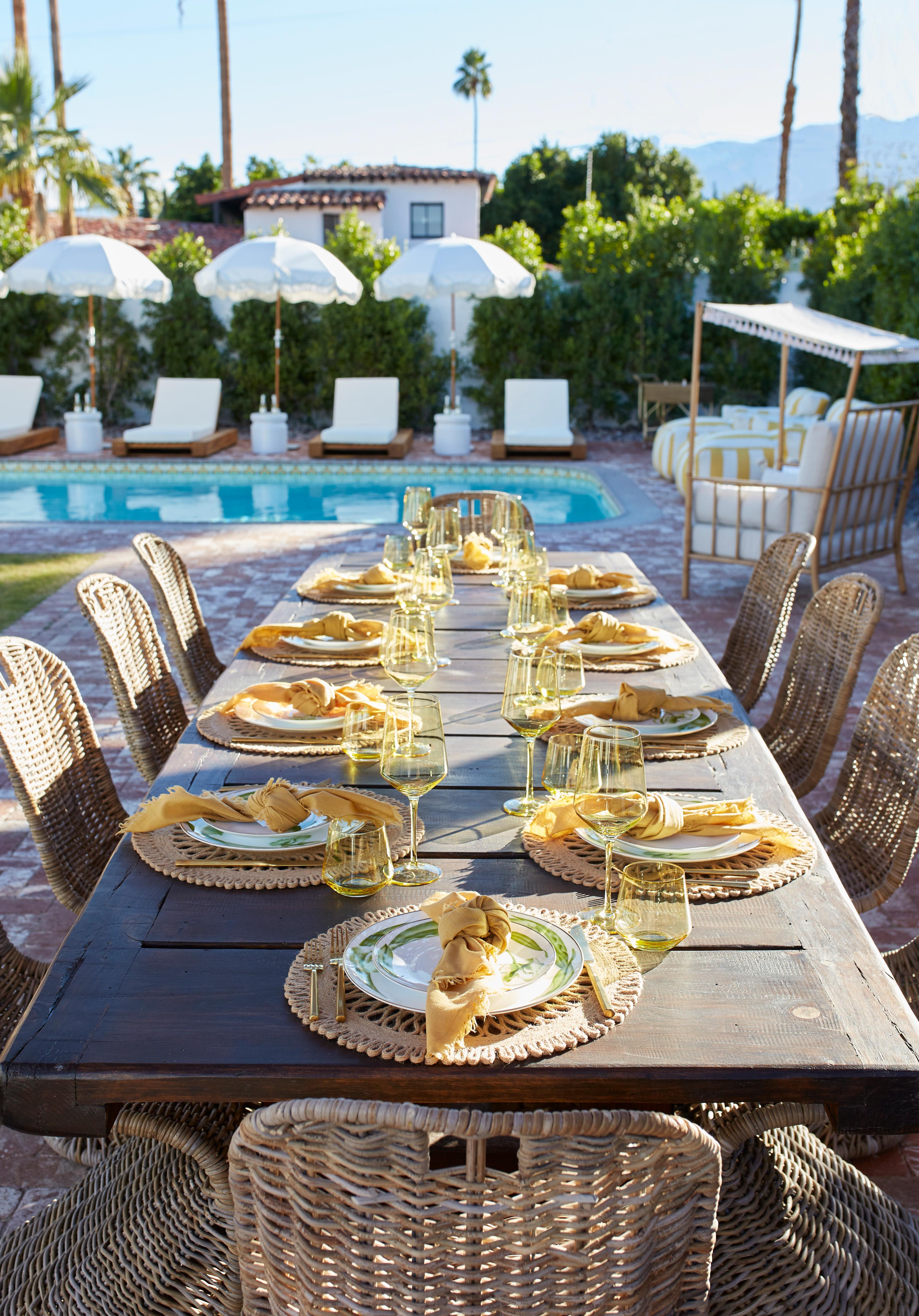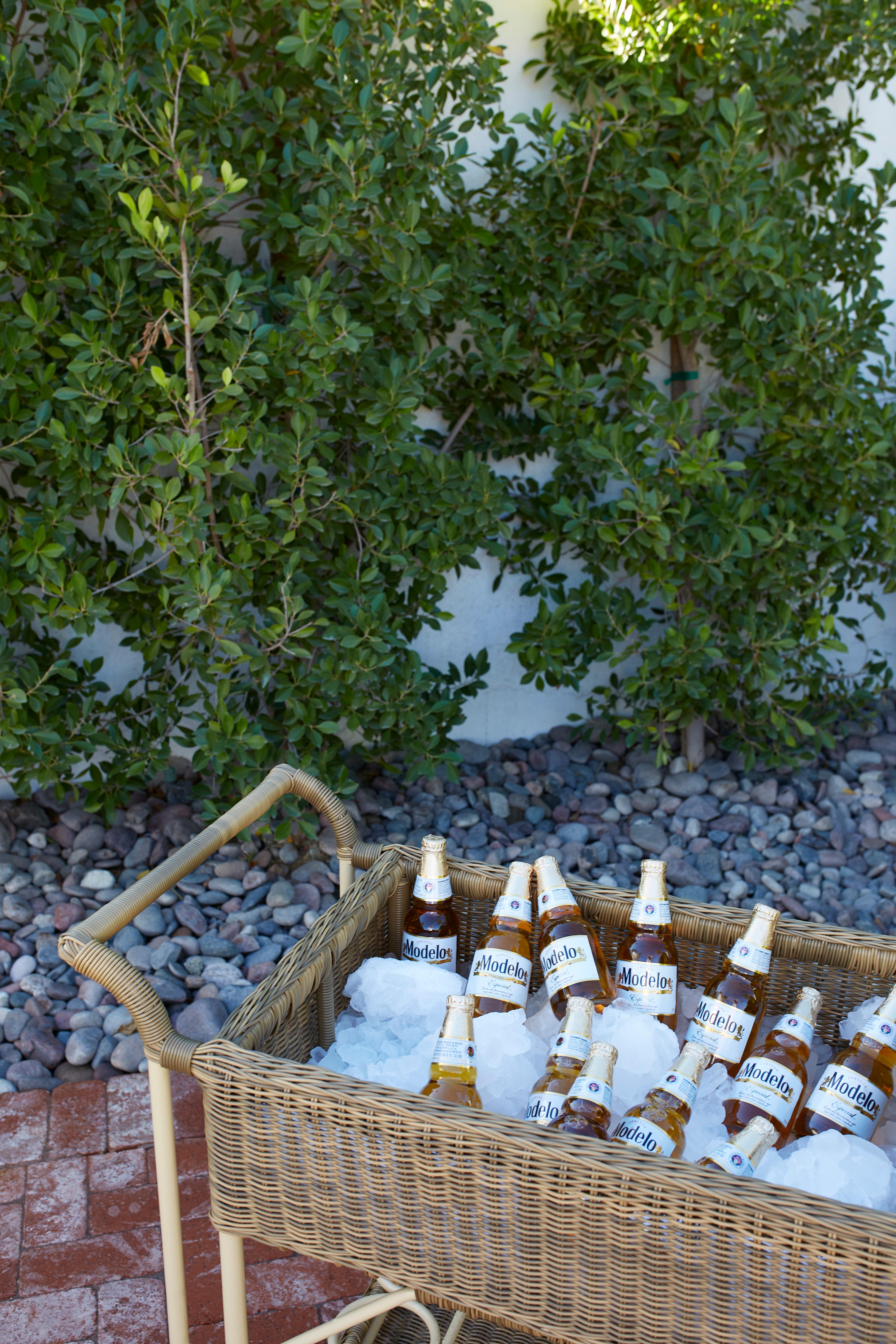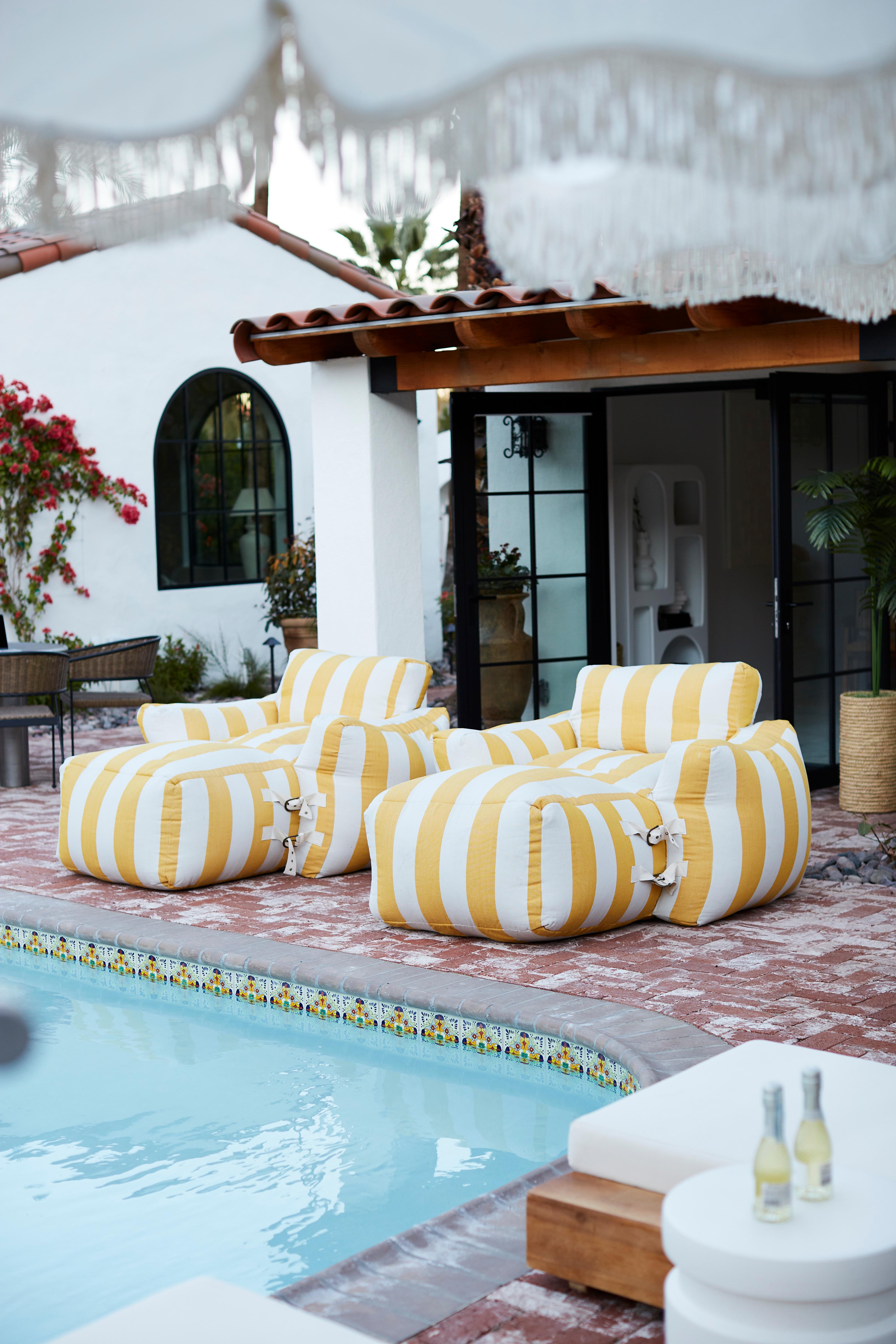How to Upgrade Your Outdoor Hosting Space, Like a Pro
We’re taking notes from a dreamy Palm Springs setup.
Published On

Photo by Jessica Alexander Photography
As we near the end of July, the rising temps might make you want to avoid the outdoors entirely—but we’re taking the opposite approach. This week, we’re leaning into all things al fresco: from poolside aperitifs to backyard dinner parties, we’re celebrating the joy of outdoor entertaining while the sun’s still high.
To help us imagine what our dream backyard setup might look like—cabanas, fringed umbrellas, and all—we tapped designer Brittny Button, founder of the LA-based studio Button Interiors. Known for her “accessible luxury” aesthetic, Brittny has a knack for creating serene, functional spaces that still feel inviting. Think: warm wood tones, vintage touches, and sculptural silhouettes with a bit of softness.
One look at her Palm Springs project, Casa de Tierra, and it’s clear she’s mastered the art of outdoor living. I now, too, want to live in a 1930s Spanish Revival home. It has fresh yet historically minded updates (I say this as someone who grew up in a Victorian house). She even restored the original pool and added a surrounding brick decking to make you want to lounge on the side, dive in—or both.
Even if you don’t have a pool, Brittny offered up practical tips to rethink your outdoor space. Here’s what she recommends:
1. Think of Your Outdoor Area in “Rooms”
One of Brittny’s top tips for designing outdoor entertaining spaces? Treat them the same way you would your home’s interior.
“Ask yourself—do the space’s elements have a function that caters to the activity that will occur there?” she says. For example, does the lounge area near a fireplace include cozy seating, side tables, and even planters to make it feel inviting? Would people actually want to sit by the fire or does it feel like an afterthought?
She emphasized the importance of offering different seating options so people feel like they can relax and hang out.
2. Match Your Interior’s Energy
To create a true indoor-outdoor flow, consistency is key. “Often, you see a derailment of choices that don’t match what the indoors feels like,” says Brittny.
While you don’t need to match everything exactly, it’s worth thinking about the overall aesthetic. Start with essentials like seating and side tables, then layer in the extras. Her advice: play around with plants, umbrellas, rattan rugs, and terracotta pots. The last two are especially great for sticking to a neutral palette while adding warmth and texture.
“Ultimately, it's about curating a classical environment that one feels relaxed in,” she adds. After all, part of the joy of outdoor entertaining is the ease that comes with it—there’s something about being outside that just feels a bit less formal.

Photo by Jessica Alexander Photography.
3. Start Neutral
She recommends keeping things neutral or choosing one pop of color. Brittny is a big fan of terracotta, clay, and cream tones.
While I sometimes love combining colors and patterns, I like her advice of starting with neutrals, then taking cues from your surroundings.
“With my Palm Springs project, I kept the lounges cream in color mixed with natural wood tones and rattan that allowed the aqua blue pool and yellow striped chairs to take the central focus,” she says.
Sometimes, it’s worth letting the backyard (and nature itself) shine.

Photo by Jessica Alexander Photography
Featured Video
4. Invest in Fun (& Functional) Pieces
Brittny is currently obsessed with outdoor daybeds and fringed umbrellas. Not only are they practical for fitting and shading multiple people, but they’re also “pure joy,” she says. Whether placed poolside or tucked in a shady corner, they add an instant “vacation at home” feel.

Photo by Jessica Alexander Photography.
Bonus points for mixing in vintage ironwork or statement planters (she recommends hanging antique gates as trellises). In short: go a little whimsical and have fun with a few standout pieces.
5. Be Proportional, but Not Always Symmetrical
A small balcony can feel a bit more inviting with a few extras. Don’t be afraid to add multiple chairs and tables, but aim for the right proportions. If you add too much, it can get crowded; if you add too little, it can feel bare. As she said, don’t be afraid to look at photos online of similar spaces to get inspiration.
She also recommends using symmetry and “repetition in odd numbers to create effortless grandeur.” Not everything has to be even—especially in seating groupings.